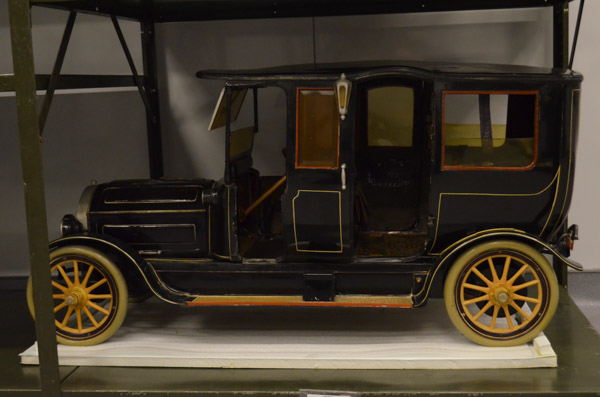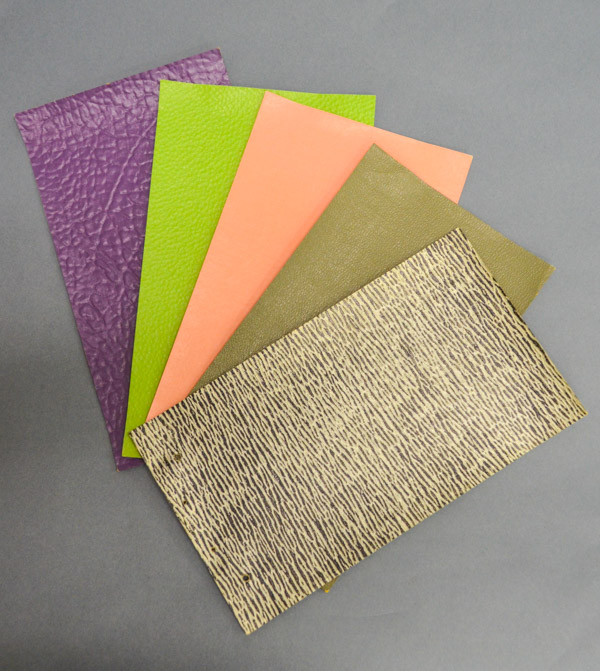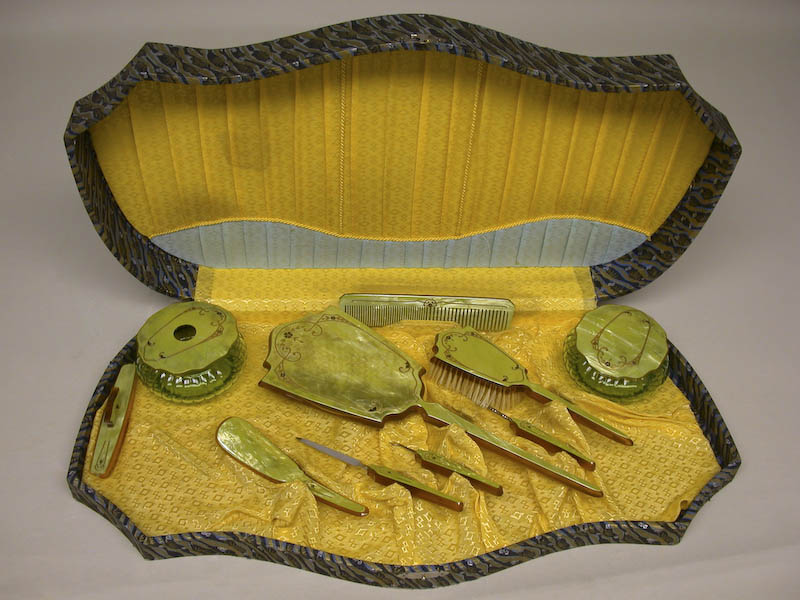Hagley’s museum collection covers more than two hundred years of DuPont products from gunpowder to holograms. Those that date from 1909 to 1935 are the rarest and most fragile of the collection due to their chemical components. This is when DuPont diversified by acquiring companies and manufacturing materials made from cellulose nitrate which was used in making smokeless gunpowder.
These materials include Fabrikoid which is a cellulose-nitrate coated artificial leather; Pyralin which is DuPont’s celluloid; lacquers and paint; Rayon fabric and Cellophane which was made moisture proof with the addition of a coating of cellulose nitrate.

We have been asked many times how we preserve these rare objects and the answer is cold storage! Hagley is the only museum in Delaware to have cold storage for its collections.
Our Object Conservator, Ebenezer Kotei, has developed a specialty for the care and preservation of synthetic materials. In this case, once these materials start to degrade there is no conservation treatment known to repair them. This chemical breakdown also produces a gas which spreads the deterioration to other objects. Eventually, the collection is a total loss.

According to Kotei: “It has been known for several years that tight control of ambient temperature and humidity in museum storage and display areas is part of the cornerstones of museum preservation practices. Early plastics such as cellulose acetate, cellulose nitrate, their derivative materials and items coated with them are not so durable. Chemical deterioration of the polymer chain and loss of plasticity leads to brittleness. Loss of plasticity also causes cracking and crazing. Additives that migrate to and solidify on the surface cause surface blooms while acidic vapors and plasticizer migration lead to surface blistering. With the material weakened through these processes, exposure to oxygen lead to crumbling and the object is lost. The rate of chemical processes like the deterioration processes occurring in acetates and nitrates can be slowed down by reducing the ambient temperature. In fact the rate of deterioration is cut in half when the ambient temperature reduced by 50oF and is doubled when the temperature is increased by 50oF. It makes sense therefore that objects whose deterioration is temperature-dependent be stored in cold environments.”

Whereas our general collections storage is maintained at 65 degrees Fahrenheit and 50% Relative Humidity, the cold storage walk in room is kept at 40 degrees Fahrenheit and 45% Relative Humidity. Additionally, artifacts that are in boxes have bags of zeolite enclosed to absorb any acidic fumes which causes deterioration of other objects.
This has proved to be a successful storage method as our loss rate has declined sharply. Click here to learn more about our object conservation.
Debra Hughes is Museum Curator of Collections and Exhibits at Hagley Museum and Library.
